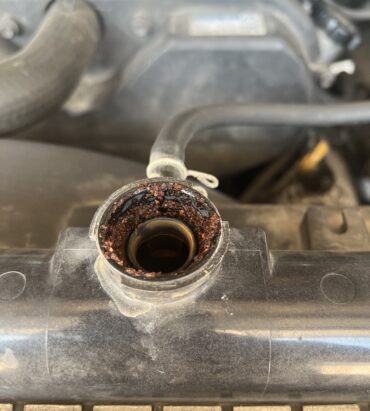The Importance of a Coolant Flush for Your Vehicle's Health

As a responsible vehicle owner, you understand the importance of regular maintenance to ensure the longevity and performance of your car. One crucial aspect that often goes overlooked is a coolant flush. In this blog post, we will delve into the significance of a coolant flush for maintaining your vehicle’s optimal performance and preventing engine damage.
What is a Coolant Flush?
A coolant flush involves completely draining the old coolant from your vehicle’s cooling system and replacing it with fresh coolant. Over time, the coolant in your vehicle can become contaminated with debris, rust, and other particles. A coolant flush helps remove these contaminants, ensuring your cooling system functions efficiently.
Why is a Coolant Flush Important?
Prevents Engine Overheating: Coolant plays a vital role in maintaining your engine’s temperature. Over time, the coolant can lose its effectiveness, leading to inadequate heat dissipation and engine overheating. A coolant flush ensures that your engine remains at the optimal temperature, preventing potential damage.
Protects Against Corrosion: Coolant contains additives that protect the internal components of your vehicle’s cooling system from corrosion. Over time, these additives break down, leaving your cooling system vulnerable to rust and other corrosive elements. A coolant flush replenishes these additives, extending the life of your cooling system.
Enhances Overall Performance: A clean and efficient cooling system allows your engine to perform at its best. By removing debris and contaminants, a coolant flush helps optimize heat transfer and prevents the buildup of deposits. This leads to improved fuel efficiency, smoother operation, and increased overall performance.
Frequently Asked Questions (FAQs):
Q1: How often should I get a coolant flush?
A1: It is generally recommended to get a coolant flush every 30,000 to 50,000 miles or every 2 to 5 years, depending on your vehicle manufacturer’s recommendations.
Q2: Can I perform a coolant flush myself?
A2: While it is possible to perform a coolant flush at home, it is recommended to have it done by a professional mechanic to ensure proper disposal of the old coolant and thorough system cleaning.
Q3: What are the signs that my vehicle needs a coolant flush?
A3: Some signs include overheating, coolant leaks, a sweet smell in the cabin, and the presence of rust or debris in the coolant.
Conclusion:
A coolant flush is a vital maintenance task that should not be overlooked. By regularly flushing and replacing your vehicle’s coolant, you can prevent engine overheating, protect against corrosion, and enhance overall performance. Be sure to follow your vehicle manufacturer’s recommendations and consult with a professional mechanic for a thorough coolant flush. Stay proactive in maintaining your vehicle’s health and enjoy years of trouble-free driving.
Remember, neglecting a coolant flush can lead to costly repairs and potentially irreversible damage to your engine. Don’t wait until it’s too late—schedule a coolant flush today to keep your vehicle running smoothly!
